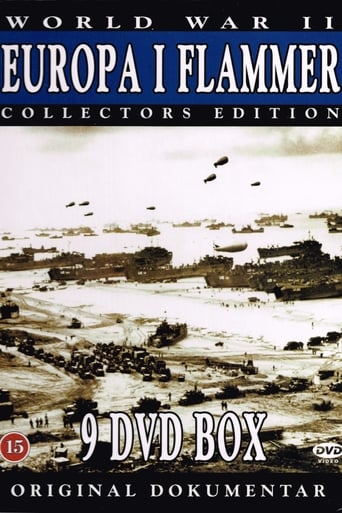John T. Ryan
ALTHOUGH WE ARE vaguely familiar with this title, we can't truly say that we had an independent recollection of viewing it. This may well be true for this writer (born 1946) and the Ryan family of 4402 S. Shields Avenue, Chicago, Illinois did not get our television set until late in 1950. The series, which we now know to be the first made for television documentary series, ran 1st time in 1949-50 and saw very little subsequent showings. This is a sharp contrast to NBC's VICTORY AT SEA; which seems to have been rerun for years.THIS SERIES OWES its origin and title to the biographical memoirs collected and published by Doubleday in 1948. Using General Eisenhower's book as a guide, the series used graphics of page and individual weekly installments made it a habit to use imagery of the book as beginning and ending visuals.
WE FOUND THAT our viewing of this television series was a production of MARCH OF TIME productions; which was a visual and theatrical counterpart of Time Magazine. The television production had many of the same elements as the theatrical news shorts; including narrator, Westbrook Van Voorhis and writers. ALTHOUGH THIS WAS a seemingly "lost" and little seen series, it is a "missing in action" item no longer. Now through the magic of our computerized world and Al Gore's internet*, one can order a order up a comlpete series set in glorious DVD without even leaving the comfort of home! And it won't cost you as much as dining at your neighborhood hash house.WOW, CLEVER THESE Americans !NOTE * We're only kidding about who invented the Internet; but you knew that all along !
bkoganbing
This documentary series is based on the memoirs of the Allied Commander in Chief Dwight D. Eisenhower and it is the European Theater from his perspective. After seeing an episode or two and looking at the titles you will see only the operations that Ike was involved in. No mention for instance of the North African campaign before the Americans landing, no mention of the Italian campaign after Ike was removed to start the planning for the cross Channel invasion, no mention of the British and their Greek campaign. This is the war that Ike saw and was involved in.The narration is sprinkled with quotes from the book and having read the book I can tell you that you have to read between the lines. Ike had some truly egotistical subordinates, George S. Patton who didn't live to write memoirs, Field Marshal Bernard L. Montgomery who wrote memoirs damning Ike with faint praise that he was a figurehead and Monty was the real brains. If Monty had been in charge we would be still figuring out how to break out at Normandy. Even a long time friend like Omar Bradley waited until after Ike's death to take a shot or two at him in memoirs.That was Eisenhower's headache, but George C. Marshall picked him because he knew the value of teamwork. His biggest contribution besides making some strategic decisions that would have global implications was working out an integrated command structure of the British, American, Canadian, and a host of other countries who sent troops to Europe. Basically he took a lot of crap from people during and after the war.If you see this documentary series it is essential you read Crusade In Europe. I'm sure it's still published, hopefully on Kindle for this generation. You read between the lines and you find out what Ike really thought. Same is true of his presidential memoirs. A real treat this series.
ron-oneto-1
I had seen "Crusade in Europe" on TV when it first came out. After viewing, Ken Burns "The War", I think it is time for this series to be placed on DVD as soon as possible. If "The War" has a good viewing audience, "Crusade in Europe" will be a smash. It is time to show what the "Greatest Generation" went through. In my family alone, we had 9 members in the Second World War and I was one of those kids collecting glass, metal, tires and whatever. My uncle died at Normandy in the first wave. Another uncle fought in North Africa, Sicily, Cassino, and Anzio where he was serious wound. Before they are all gone, its time to show the famous and the infamous once again. We have to remember those men and women who served and the type of people they were and what they stood for, on both sides. We most know our history and its people.
bcolquho
I saw this on A&E back in 1989. The series was based on Dwight D. Eisenhower's book of the same name. It covered the entire ETO, (European Theater of Operation, for those of you who weren't in the military.) It uses archive footage of the famous and infamous. I wish it was on the History Channel. A show like that is a classic and should be shown again for those who were born after 1989. It's a good show. The program was interesting. If it's on VHS, or DVD, then I say buy it. It's very interesting. You'll love it. I did. I'm sure you will too. If you don't, don't blame me and certainly don't shoot the messenger. That's me too.
